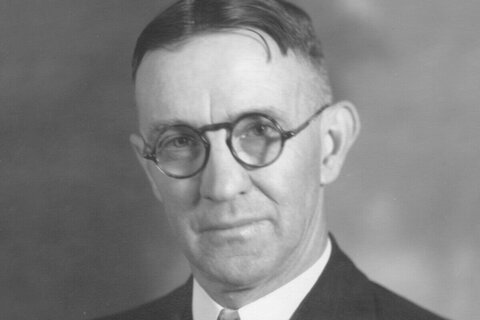
Victor E. Shelford has been called “the father of animal ecology” because he was one of the first scientists to study natural environments as communities of complex relationships among animals and plants.
His studies led to “law of toleration,” which stated that every species is able to successfully live and reproduce only within a defined range of environmental conditions, including temperature, sunlight, soil type and moisture. “Scientists teach this fundamental principle of physiological ecology in introductory ecology courses to this day,” according to the authors of University of Illinois: Engine of Innovation.
Shelford joined the U of I faculty in 1914, with the expectation that the University would build him a vivarium with three greenhouses. Today, it is known as the Victor E. Shelford Vivarium.
Just prior to arriving at Illinois, Shelford attracted national attention with his 1913 book, Animal Communities in Temperate America, considered “the first substantial volume on animal ecology ever published,” according to Engine of Innovation.
As a U of I zoology professor, Shelford was legendary for his nature trips, during which his students were expected to do grueling fieldwork. Not only did Shelford demand that his students show up for these weekly trips, he fined them for every minute they were late. His groups traveled by car, bus, train and on foot, and scoured cornfields, prairies, woods, dunes, ponds, lakes, rivers and floodplains from Lake Michigan to Tennessee.
Shelford’s personal goal was to experience every type of natural habitat in North America, “a feat he almost accomplished,” says biographer Robert A. Croker.
With that goal in mind, Shelford helped organize the Ecological Society of America in 1915. He served as its first president and chaired the ESA committee that pinpointed 600 North American wilderness areas worthy of preservation for ecological study. The scientific arguments for their preservation were detailed in the Naturalist’s Guide to the Americas, edited by Shelford.
In 1946, Shelford led the formation of the Ecologists’ Union, which became The Nature Conservancy in 1951. Now the world’s largest nongovernmental conservation organization, it has more than 1 million members and has protected 119 million acres of land to date, working in every U.S. state and 79 countries and territories.
Less than a year after Shelford’s death on Dec. 27, 1968, Time magazine dubbed 1969 the “year of ecology”—a term little known before Shelford and his colleagues brought it to light.
Sources: Pioneer Ecologist: The Life and Work of Victor Ernest Shelford 1877–1968 by Robert A. Croker (Smithsonian, 1991) and The University of Illinois: Engine of Innovation (University of Illinois Press, 2017).